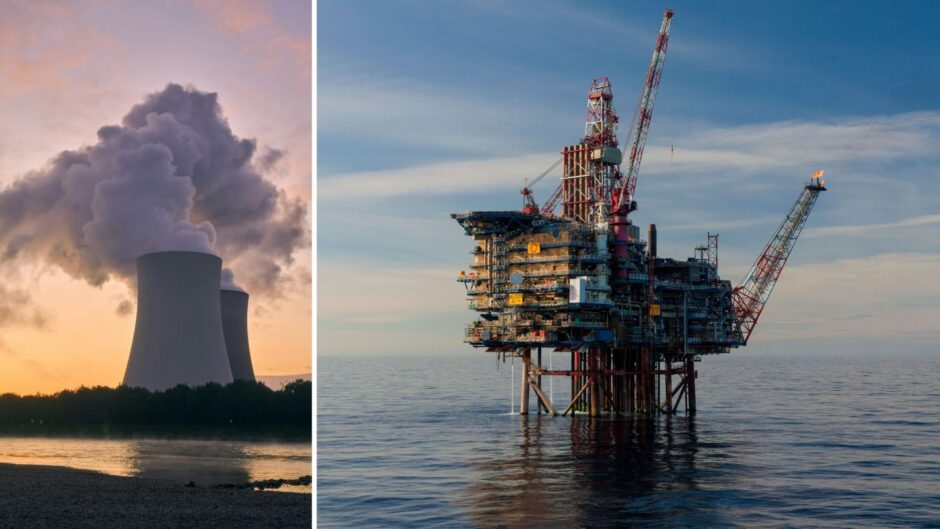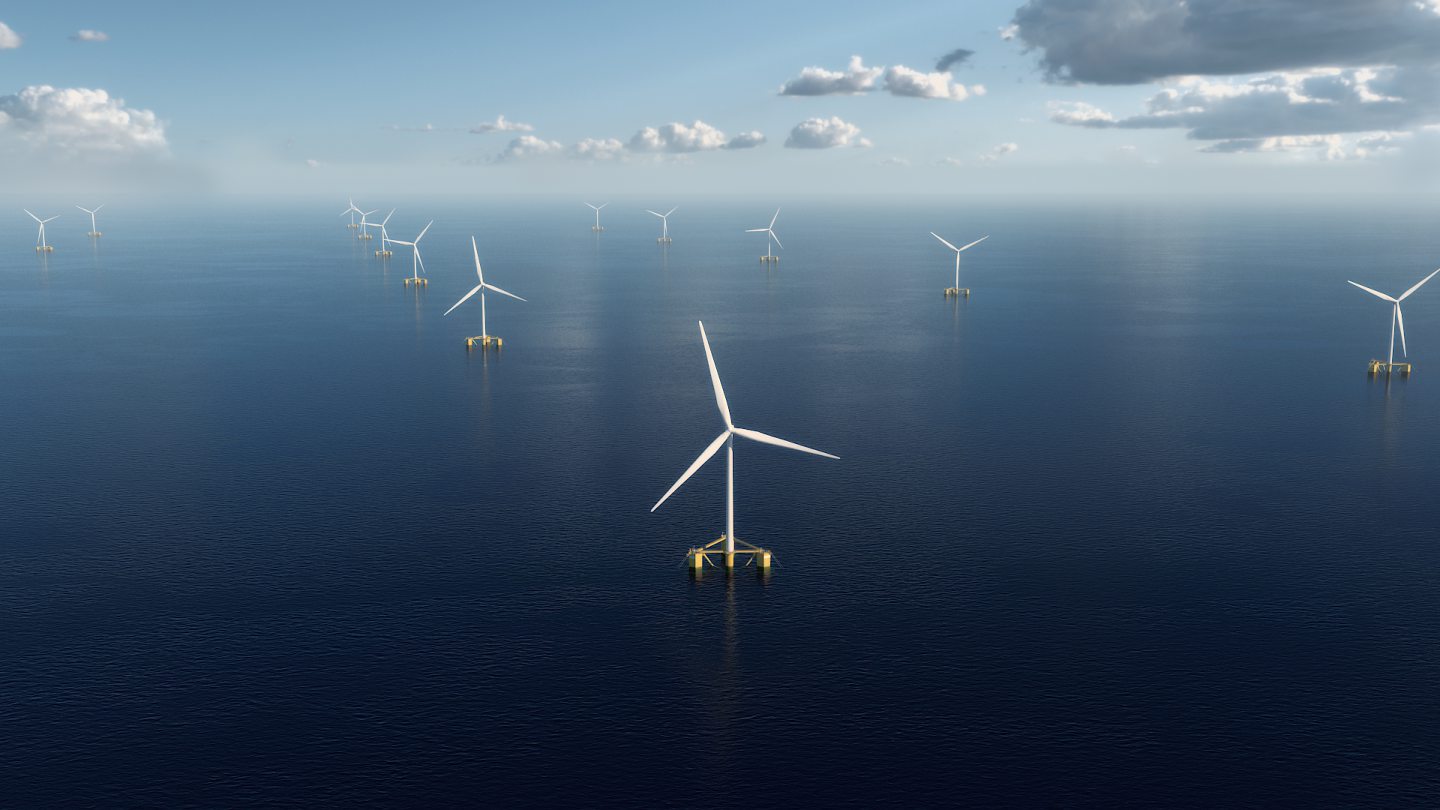
‘Independent North Sea oil and gas operator Viaro Energy is exploring the use of mini nuclear reactors to decarbonise its offshore assets.
Viaro announced a memorandum of understanding (MoU) with nuclear power startup Newcleo, establishing a strategic partnership and a framework for feasibility studies.
Under the plans, Viaro will deploy Newcleo’s Advanced Modular Reactors (AMRs) at onshore sites and connect them to the company’s existing and future offshore assets.
Viaro currently holds non-operated stakes in around 30 offshore assets in the UK and Netherlands sectors of the North Sea, including the Anning and Somerville fields.
Viaro also announced an investment in Newcleo, acquiring shares in its latest capital raise, but did not disclose the amount.
Newcleo reactor technology
Launched in 2021 by Italian physicist Stefano Buono, Newcleo is developing a unique lead-cooled fast reactor (LFR) technology.
The LFR technology is designed to run on reprocessed spent nuclear fuel created by existing reactors.
Newcleo said this not only reduces the climate footprint of its operations, but “will effectively close the fuel cycle” by increasing the useable energy created from previously mined uranium.
The company said this eliminates the need to extract and process new uranium resources and reduces the amount of nuclear waste.
The LFR technology is part of a range of emerging nuclear reactor types known as Generation IV reactors.
Newcleo said its mini reactors are suitable for a wide range of locations due to “unique intrinsic safety and compact characteristics”.
As a result, Newcleo said the reactors can be co-located with electro-intensive industries such as offshore oil and gas operations.
The London-based firm aiming to become one of Europe’s best funded startups as it seeks to raise €1 billion (£860m) this year.
Newcleo is currently targeting a 2030 launch date for the first nuclear-fuelled prototype of its technology.
Viaro and Newcleo joint venture
After the completion of feasibility studies, the two companies will establish a joint venture to deploy Newcleo’s 200MWe LFR reactors at selected sites within Viaro’s portfolio.
Viaro said this includes its existing North Sea assets as well as prospective acquisitions the company is currently targeting.
Viaro said the technology will contribute to meeting the industry’s net zero targets and maximise the benefits of AMRs for cogeneration, combined heat and power and off-grid application.
With an 60-year average life span, Viaro said any LFR reactor will continue providing clean energy to the UK grid after the decarbonisation of its hydrocarbon assets.
Viaro Energy chief executive officer Francesco Mazzagatti said the company is proud to “spearhead decarbonisation efforts” in the oil and gas sector through the use of nuclear technology.
“The partnership with Newcleo is a major milestone in our strategy to exemplify the only economically viable approach to the energy transition by investing in both energy security and long-term net-zero goals,” he said.
“Stefano Buono and his team are true visionaries with decades of experience with nuclear energy, and we are confident in Newcleo’s potential to pave the way towards a sustainable and affordable clean energy solution, as evident from its already numerous partnerships with the leaders and pioneers of each core industry segment.
“It is because of my belief in the concept and the team behind it that both Viaro and myself personally have also acquired shares in Newcleo.”
Viaro and Newcleo partnership ‘exciting’
Newcleo chairman and CEO Stefano Buono said the “exciting partnership” demonstrates the potential for the LFR technology to support industrial decarbonisation.
“The transition to net-zero will only be achieved by decarbonising not only the energy, transport and heat sectors but also energy intensive and “hard to abate” heavy industries.
“Our technology means that, for the first time, nuclear reactors will provide decentralised, baseload, low-carbon energy to customers with enhanced safety and security of supply.
“Viaro’s pragmatic and forward-looking approach will help them to blaze a trail towards lower-carbon operations in the oil and gas sector and we are delighted to be partnering with them and to provide energy solutions to make their aims a reality.”
Decarbonising oil and gas assets
In 2021, North Sea oil and gas operators pledged to cut their emissions in half by 2030 and to achieve net zero emissions by 2050.
The commitments came as part of a package of measures agreed with the UK government as part of the North Sea Transition Deal.
Many operators are exploring electrification of their offshore assets to achieve emissions cuts, primarily through offshore wind.
However, there are concerns electrification targets will be missed, and industry analysts are proposing alternative solutions such as carbon capture, utilisation and storage.
While Viaro Energy is the only North Sea operator to announce it is considering nuclear reactors so far, the technology is being touted as a possible solution by the International Atomic Energy Agency (IAEA).
“Most oil and gas operations burn fossil fuels to produce the energy needed for their upstream and downstream operations,” said IAEA nuclear power division director Aline des Cloizeaux.
“To drive down carbon emissions from these processes, ideally drilling, natural gas liquefaction and refining would be electrified with low carbon sources, such as nuclear.”
Drilling and refining ‘need nuclear’
The endorsement of nuclear power as a possible solution for the oil and gas sector is echoed by Terra Praxis, a non-profit focused on decarbonisation solutions for hard-to-abate industrial sectors.
Terra Praxis chief technology officer Chirayu Batra said companies with refining processes and drilling operations “need nuclear”.
“These are very carbon intensive processes, and in 30 per cent of cases, the electricity grid cannot reach the areas where extraction or refining are carried out,” Mr Batra said.
“Burning diesel and gas to produce the energy required for these operations is a business loss for the industry and means greater carbon emissions.
“There is a way for these processes to be electrified through a remote, reliable and carbon-free source. MRs (microreactors) could be used in most locations, even offshore if you place them on ships or floating platforms.”
While small modular reactor (SMR) technology is promising for its low-carbon credentials, it remains significantly more expensive than renewable energy options like wind and solar.
In addition, a Stanford University study found SMRs produce between two and 30 times more radioactive waste than their conventional counterparts.
Though Viaro’s plans involve placing modular reactors onshore, the concept of a floating offshore nuclear power plant is already a reality thanks to Russia’s state nuclear corporation Rosatom.
Rosatom plans to export its floating nuclear power units to markets in the Middle East, Southeast Asia and Africa.
 © Supplied by Viaro Energy
© Supplied by Viaro Energy © newcleo
© newcleo © Supplied by Cerulean Winds
© Supplied by Cerulean Winds